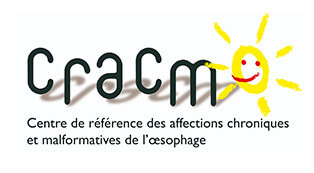Rare disease database
The National Database of Rare Disease Data (BNDMR) is a national database aiming to provide France with a homogeneous collection of data on the basis of a minimum set of data to document the care and state of health of patients with rare diseases in French expert centres.
The BNDMR aims to:
- Better document patients and their illness
- Better organize the healthcare network
- Increase awareness of rare disease activity and help with regulatory reporting
- Facilitate research in the field
- Better exploit the potential of large national databases
The BNDMR project operates on two levels:
- The BaMaRa application (at local level): collects a set of patient data within a given hospital
- The BNDMR warehouse (at national level): collects and stores de-identified BaMaRa data
The sector's project managers support the expert centres in the deployment of BaMaRa.
To find out more, visit the BNDMR website (http://www.bndmr.fr).
What is a register?
A disease registry strives to know and record all cases of a specific disease occurring in a given territory. It therefore theoretically allows us to know the incidence of the disease within that territory; i.e., the number of new cases that have occurred during the period observed. Furthermore, to the extent that known or suspected risk factors are also identified, registers can detect relationships between risk factors and disease and thus gain valuable knowledge about the origin of the disease. This is important for assessing the care situation and for planning preventive measures and management plans that will be needed in the future. Disease registries therefore play a crucial role in decisions taken in health policy.
A distinction must be made between such epidemiological registers on the one hand, and hospital registers or databases on the other. These are used to collect data relating to a specific disease and treatment in a hospital, a group of hospitals or a network of care. These registries make it possible to compare and evaluate therapeutic approaches and support structures. On this basis, we can then take measures to improve the quality of care and support.
Registries enable us to meet several requirements: the surveillance and quantification of diseases, the search for the causes of these diseases, but also the need to evaluate health policies.
Oesophageal atresia register
Created in 2008, it was validated by the National Committee for Rare Diseases Registers (CNR-MR) in 2011 and the Registries Evaluation Committee also gave a favourable opinion until 2020.
This register systematically registers all children born with oesophageal atresia in France since 2008. Between 2008 and 2015, 1298 patients with oesophageal atresia were registered, of which more than 1,000 presented with type III atresia.
A register is a structure that carries out a continuous and exhaustive collection of data. As a result, certain tools are used to improve coverage:
Data from the register were compared with those from the Information Systems Medicalization Program (PMSI), which aims to define the activity of public hospital service units.
|
Years |
2008 |
2009 |
2010 |
2011 |
2012 |
2013 |
2014 |
2015 |
Total |
|---|---|---|---|---|---|---|---|---|---|
|
PMSI |
127 |
154 |
173 |
168 |
182 |
167 |
185 |
174 |
1330 |
|
Data base |
149 |
161 |
161 |
175 |
162 |
156 |
162 |
172 |
1298 |
|
Delta PMSI |
22 |
7 |
-12 |
7 |
-20 |
-11 |
-23 |
-2 |
-32 |
Data were also compared for 2011 with data from the Medical Information Departments (DIM) of the 37 centres that make up its healthcare network:
- 31 DIM responded out of the 37 centres. Data from 25 centres were verified (117 patients in all)
- 4 patients with oesophageal atresia were also declared in the register, but 15 patients were found missing from the latter, which shows a shortfall of 12% of patients that the register will be able to find in order to correct this deficit.
For any questions, please contact the clinical research associate in charge of the register, Mrs. Katialine GROFF (katialine.groff@chru-lille.fr).


